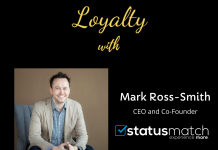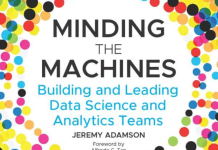
Industry veterans, Dave Canty and Phil Gunter join the Loyalty Summit WebCast to discuss reinventing loyalty programs.
In the Loyalty Leaders Insights discussion series, we seek out the smartest minds in loyalty and dig deep to uncover their thoughts on the most relevant topics that can assist loyalty program managers.
Following the live WebCast, I sat down with the guys to build on their comments from the live session.
View the full recording of the hour-long fireside chat via the Loyalty Summit WebCast link.
Partner, New World Loyalty & Former VP Global Loyalty, IHG
Founder & Partner – New World Loyalty
If you missed the live Webcast, you can view the recording at the bottom of the page.
You both emphasized the importance of programs to go back to basics – what are the key components and the key stakeholder interests that program managers should be looking at when considering overhauling their loyalty programs?
Dave Canty: Make sure you ask yourself – What is the purpose of your program? – Ensure you fully understand what the business is expecting you to achieve
- Nail the customer proposition, know what they want or expect from the program and never lose sight of that.
- Bring the finance, revenue management on the journey, but own it, view them as partners and ensure you are accountable, and therefore own the decisions.
Phil Gunter: Remember that the value that the program brings to Group through increased demand for the airline is (or should be) GREATER than the value that the FFP brings through selling miles to 3rd parties. The impact on demand is harder to measure and is often underestimated but for a good program, it is massive.
I worry that many FFP managers are focused only on their own P&L and not the Group impact, this results in poor design and program decisions that may look good for the FFP P&L in the short term but undermine the value to the group – and also undermine the FFP potential over the longer term.
When looking to overhaul their programs – loyalty managers often look to copy what other programs have done before. What do programs need to watch out for when looking to copy initiatives? What are the “traps” that could trip programs up?
Dave Canty: I think it’s ok to get ideas from other programs, but it is important for you to have your own vision for what it is you’re trying to achieve. Simply cloning something doesn’t allow you to have the context of the ideas that went into it. Also, programs are ever-evolving and they should always be evolving to stay relevant. I would always consider structuring your team to look after the program today and have a few working with you to ensure you remain relevant 3 years out.
Phil Gunter: Two key traps:
1) assuming that the feature will work for you (it may not even work for the program that you have copied it from), a full assessment of the impact of the customer, business and economic impact is always needed
2) Laziness – simply copying the feature rather than refining it for your own business.
One example that we have seen recently is airlines looking to copy revenue-based initiatives. Virgin Australia and JetBlue were amongst the pioneers of implementing revenue-based loyalty programs – both of which were well received by members and were successful for the airlines. But since then we have seen programs look to copy each other – but the results have often seen value being stripped away from all but the highest-spending member segments, leading to loss of relevance and erosion of loyalty for more infrequent flying members. What mistakes do you think airlines have made in forgetting to build these changes from “first principles”?
Dave Canty: The heartbeat of a program is in redemption and it’s important as a program manager to protect the value, at the end of the day you need to be the advocate for the customer. Know your numbers, know your models and expected results and sell that internally.
Phil Gunter: The engagement in programs and the programs ability to charge a premium for miles/points have build up over years – largely based on the ability to get reward seats of real value (the dream of ‘flying around the world in First Class’ can inflate the perceived value of a mile even if members choose to burn miles on other rewards). Availability of rewards is an important factor, but the potential value of a long haul premium cabin reward is also powerful. I fear that it is easy to hear of one problem (reward availability) and solve that at the expense of Reward Value. At Virgin, we tried a simple ‘dynamic pricing rewards’ model and it did not work effectively on its own. It is possible to have both! Delivering value, availability and flexibility – it just takes a little more work.
Speaking of infrequent flyers – how important is it for programs to ensure this segment is well catered for in any program overhaul?
Dave Canty: I’ve always viewed them as critical, they represent the top of the funnel, but the more you look after them, the more they become advocates. They also generally fly on high demand dates and ultimately pay a premium without the expectation of entitlement.
Phil Gunter: It is important to have a program that caters to multiple segments – including the infrequent flyers. This group is often the biggest in number and provides a valuable marketing database, profit from points sold to 3rd parties (many infrequent flyers still have cobranded cards because they like the value of the rewards) and potentially future frequent flyers.
When redesigning the modern FFP – is the focus on “loyalty” of members, data collection, or growth of revenue from cobrand card billings? Where should it be?
Dave Canty: Don’t collect data unless you intend to use it, data is important and can allow you to be quite personal when used for delivery of service.
Loyalty is a two-way street, and this goes back to question 3 and being an advocate for the customer. If you can nail the customer proposition and deliver it consistently well, you will nurture Loyalty.
Phil Gunter: ALL 3 – in fact, there are many other objectives. A good program will understand the multiple objectives and the trade-offs, and then design to optimise the performance.

























